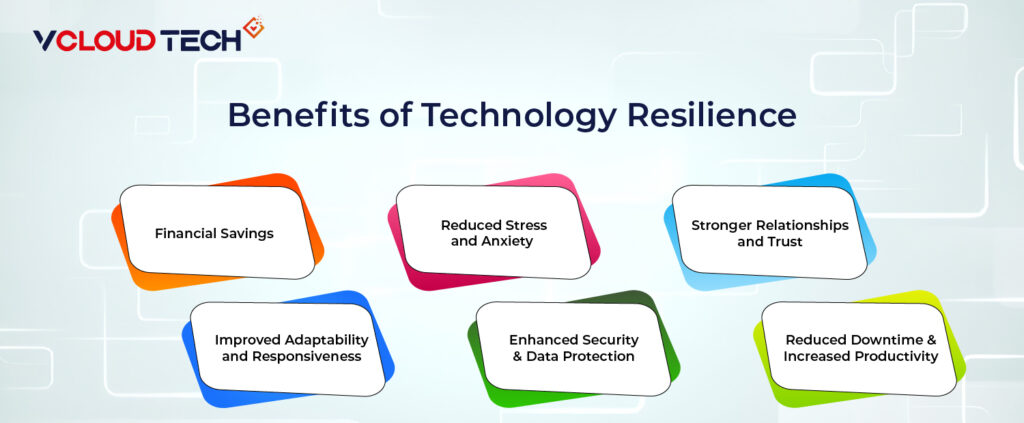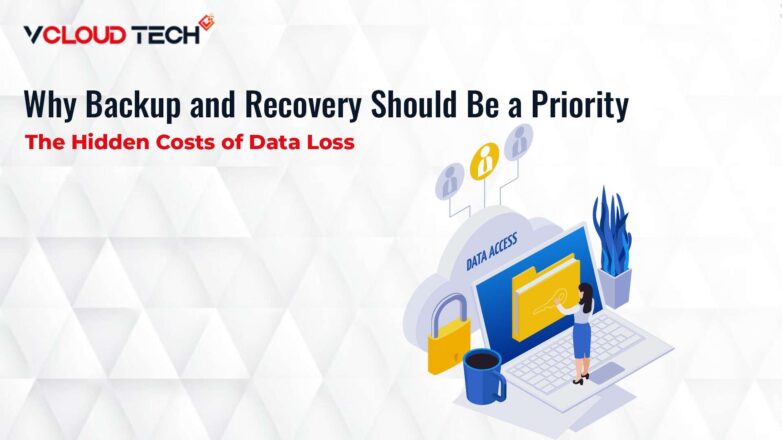In the fast-paced and interconnected world, technology plays a pivotal role in the success of businesses. However, with great reliance on technology comes the risk of disruptions, ranging from technology failures to information security breaches. Implementing robust technology resiliency measures is essential to ensure the survival of companies in the face of such challenges. This blog will delve into the key components of Technology Resiliency, emphasizing the significance of business continuity planning, risk management, and the role of IT infrastructure and cybersecurity.
What is IT Resilience?
IT resilience, sometimes known as digital or tech resilience, is a collection of operational procedures that let businesses maintain adequate service levels even in the face of interruptions in the availability of their IT infrastructure. Put otherwise, it refers to ensuring your IT processes are resilient enough to survive system failures without causing disruptions, downtime, or data loss.
Businesses can strengthen their IT function by combining specified practices and particular functions known as IT resilience. Being resilient entails more than merely upgrading your command structure or installing new software. Organizations that invest in these practices throughout their company lifespan see an increase in IT resilience, much like a muscle. Results will come from this journey as long as you stick with it.
How To Become Technology Resilient?
Becoming technology-resilient involves building your ability to adapt, thrive, and bounce back from challenges in a tech-driven world. Here are some ways to achieve this:
Personal Resilience:
Develop a growth mindset:
Embrace challenges and setbacks as opportunities to learn and grow. See technology as a tool you can master, not a foe to fear.
Expand your skillset:
Continuously learn new technologies and stay updated on the latest trends. Take courses, attend workshops and network with tech professionals.
Strengthen your emotional intelligence:
Manage stress effectively, practice mindfulness, and build confidence. A calm and collected mind can navigate tech disruptions better.
Build a support network:
Surround yourself with people who can offer guidance and encouragement. Contact friends, family, or online communities for help when needed.
Organizational Resilience:
Foster a culture of learning and innovation:
Encourage employees to experiment, take risks, and learn from mistakes.
Invest in reliable technology:
Choose robust and scalable solutions that accommodate growth and change.
Create contingency plans:
Develop clear procedures for responding to unexpected events and minimizing downtime.
Communicate effectively:
Keep everyone informed about potential risks and mitigation strategies.
Remember, technology resilience is an ongoing process. By building your skills, knowledge, and adaptability, you can confidently and confidently navigate the ever-changing tech landscape.
Benefits of Technology Resilience
The benefits of technology resilience are numerous and span various aspects of personal and professional life. Here are some key advantages:
Reduced downtime and increased productivity:
Resilient systems are less prone to failures and disruptions, which means less downtime and more time for you to be productive. Think of it like having a car with a spare tire – if you get a flat, you can quickly switch it out and get back on the road.
Enhanced security and data protection:
Technology resilience often involves robust security measures and Data Backups, which can help protect your critical information from cyberattacks, breaches, and accidental loss.
Improved adaptability and responsiveness:
Technology changes rapidly in today’s fast-paced world. By being resilient, you can easily adapt to new technologies and trends, giving you a competitive edge and allowing you to seize new opportunities.

Reduced stress and anxiety:
Knowing that your systems are reliable and secure can give you peace of mind and reduce stress and anxiety. It’s like having a safety net – you can face challenges knowing you have a backup plan.
Stronger relationships and trust:
When you can consistently deliver on your promises and meet deadlines thanks to reliable technology, you build trust and stronger relationships with clients, colleagues, and partners.
Financial savings:
Technology disruptions can be costly in terms of lost revenue and repair costs. Being resilient means avoiding these expenses and protecting your bottom line.
Overall, technology resilience is an investment that pays off in multiple ways. It can help you be more productive, secure, adaptable, and successful personally and professionally.
A Step-by-Step Guide to Embark on the Journey of Technology Resilience
In the fast-evolving landscape of technology, the quest for resilience is akin to a strategic expedition. Navigating this journey requires a systematic approach, marked by deliberate steps that fortify organizations against the unpredictable currents of Technology Failures and disruptions.

Step 1: Establish a Baseline Understanding
Begin by cultivating a comprehensive understanding of your organization’s technological landscape. Identify critical IT assets, potential vulnerabilities, and the specific risks associated with your industry. This baseline assessment sets the stage for crafting tailored technology resilience strategies.
Step 2: Develop a Holistic Business Continuity Plan (BCP)
Craft a Business Continuity Plan (BCP) that transcends traditional risk management. This plan should address technology failures and account for broader disruptions such as natural disasters or pandemics. Ensure it is a living document, regularly updated to stay relevant amidst evolving threats.
Step 3: Conduct Rigorous Risk Assessments
Implement a proactive Risk Management program by conducting regular risk assessments. Identify potential threats, assess their impact on operations, and prioritize them based on severity. This ongoing process helps formulate targeted mitigation strategies and keeps your resilience measures agile.
Step 4: Fortify IT Infrastructure
Build a resilient IT Infrastructure by incorporating redundancy, scalability, and rapid recovery mechanisms. Leverage technologies like cloud computing and virtualization to enhance flexibility and responsiveness. Regularly update hardware and software components to stay ahead of emerging challenges and potential technology failures.
Step 5: Elevate Cybersecurity Measures
Elevate cybersecurity from a mere safeguard to a strategic pillar of resilience. Implement robust firewalls, intrusion detection systems, and encryption protocols to protect sensitive information. Conduct routine security audits and invest in employee training to foster a culture of Cybersecurity awareness.
Step 6: Foster a Culture of Adaptability
Instill a culture that embraces change and adapts to evolving technological landscapes. Empower employees to be proactive in identifying and reporting potential risks. Encourage continuous learning and ensure teams are well-versed in the latest technological advancements and security best practices.
Step 7: Test and Refine Resilience Strategies
Regularly test your technology resilience strategies through simulated scenarios. That could involve running drills for disaster recovery, cybersecurity incidents, or unexpected technology failures. Use these simulations to identify weaknesses and refine your resilience strategies accordingly.
Step 8: Collaborate and Stay Informed
Forge partnerships with industry peers, share insights, and participate in collaborative efforts to stay informed about emerging threats. Being part of a wider network allows for collective intelligence, enhancing your ability to anticipate and counteract potential disruptions.
Embarking on the journey to technology resilience requires commitment, adaptability, and a proactive mindset. By diligently following these steps, organizations can build a resilient framework that not only withstands technological disruptions but also propels them forward in the digital era.
Conclusion
In the ever-evolving tech landscape, technology resiliency is not a luxury but a necessity for businesses striving to survive and thrive. By integrating robust business continuity planning, effective risk management, resilient IT infrastructure, and cybersecurity measures, organizations can confidently navigate technology failures and disruptions. Embracing a holistic approach to technology resiliency ensures that businesses remain agile, adaptable, and well-prepared for the challenges of the digital age.








